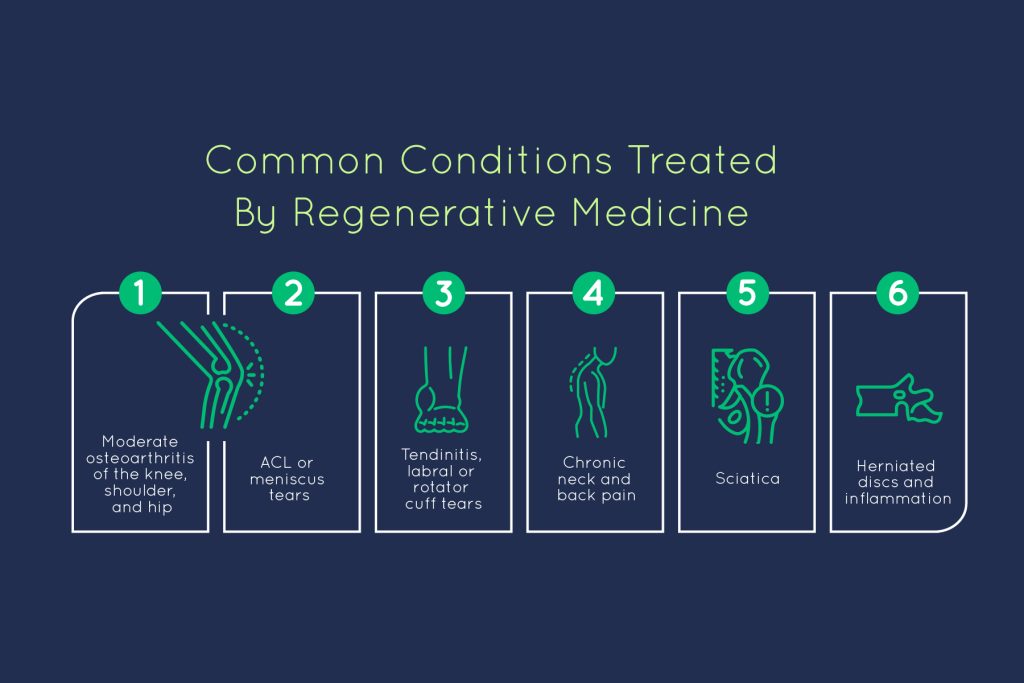Exploring the Benefits of Regenerative Medicine for Pain Relief and Healing
Everyone experiences some form of pain in their lifetime. Those suffering from chronic pain are often subjected to a barrage of medications and surgical treatments that don’t always fix the problem.
But there is another option. Regenerative medicine – a non-invasive pain treatment option that is growing in popularity as a revolutionary approach to pain relief and healing. So, if you are dealing with an injury or chronic pain, consider this your comprehensive guide to the benefits of regenerative medicine for tissue regeneration and pain treatment.
Understanding Regenerative Medicine
Regenerative medicine is an innovative field that focuses on harnessing the body's natural healing abilities to repair and regenerate damaged tissues. However, to truly understand the science behind regenerative medicine, we have to dig into its underlying principles.
When injured or invaded by disease, our bodies have the innate response to heal and defend using stem cells that exist inside us. Regenerative Medicine harnesses the power of stem cells to stimulate a healing response.
By “jump-starting” the body’s remarkable ability to heal itself through regenerative medicine, patients can avoid the use of anti-inflammatory drugs and other pain intervention techniques that might harm their long-term healing. This is the root of how regenerative medicine differs from conventional pain management techniques.
The Benefits of Regenerative Medicine
The benefits of regenerative medicine are widespread when stacked against traditional pain management techniques.
Tissue Regeneration
Far beyond masking the symptoms of pain caused by tissue damage, regenerative medicine can spark tissue repair and regrowth. Using this technique, cartilage, tendons, ligaments, and even organs, can be encouraged to heal – reducing pain and increasing functionality.
Non-Invasive and Minimally Invasive
Regenerative medicine procedures are typically non-surgical or minimally invasive, resulting in reduced risk, shorter recovery times, and fewer complications than traditional surgical interventions.
Long-Lasting Effects
Regenerative medicine treatments target the root cause of pain and tissue damage, aiming to provide long-lasting relief rather than temporary symptom management.
Potential to Avoid Surgery
Regenerative medicine may offer an alternative to invasive surgical procedures for certain conditions, allowing patients to explore non-surgical options first. Surgery should be saved for surgical issues!
Personalized Treatment
Regenerative medicine treatments can be tailored to each patient's specific needs, considering factors such as age, overall health, and the severity of the condition for optimal outcomes.
Applications of Regenerative Medicine
Regenerative medicine can be applied to a wide range of pain sources. From joint pain to wound healing – regenerative medicine has the potential to help with it all. Patients with the following injuries have seen great success when treated with regenerative techniques.

Regenerative medicine can be used to provide long-term relief for a host of symptoms.
Joint Pain and Osteoarthritis
Regenerative medicine techniques, such as platelet-rich plasma (PRP) injections or harvested cell therapy, can alleviate joint pain, reduce inflammation, and potentially regenerate damaged joint tissues.
Soft Tissue Injuries
Regenerative medicine can accelerate the healing of soft tissue injuries, such as tendonitis, muscle strains, and ligament sprains, leading to faster recovery and reduced pain.
Chronic Pain Conditions
Regenerative medicine can help manage chronic pain conditions, such as fibromyalgia or neuropathy, by addressing underlying tissue damage and promoting healing.
Wound Healing
Regenerative medicine can enhance wound healing processes, particularly for chronic or non-healing wounds, by applying growth factors and specialized cell therapies.
In Conclusion
Regenerative medicine utilizes revolutionary non-invasive techniques to help with a number of common issues. We encourage you to explore regenerative medicine as a promising approach to address chronic pain, promote tissue regeneration, and avoid invasive surgeries. If you suffer from chronic pain or injuries, consult a regenerative medicine specialist today!


